Include a Topper!
-
Happy Birthday Banner
$9.00 -
Gingerbread Cake Topper
$15.00
Add Ons
Your cart is currently empty!
Since 1949 celebrating 75 years. Order online or call us at 1 800 GAMBINO (426-2466)
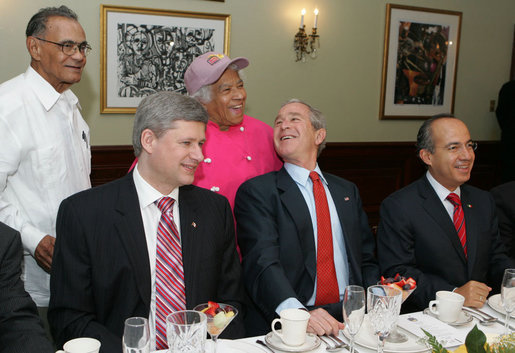
Welcome to the second installment of our two-part series on all of the American presidents that have visited New Orleans. It turns out there have been a lot of them!
In Part 1, we traced our way from the start of our country all the way to an exciting visit from President John F. Kennedy. In this post, we’ll go from his predecessor to our modern-day leaders of the Executive Branch.
Lyndon B. Johnson
America’s 36th president visited the Crescent City twice. The first was for a campaign fundraising gala in October 1964 at The Jung Hotel and Residences on Canal Street.
First opened in 1907, The Jung boasted the city’s first retractable roof. By the middle of the 20th century, the hotel was being advertised as theSouth’s largest convention hotel in the heart of America’s most interesting city. President Johnson’s $100 per person gala was also interesting. It was held just a few months after the passage of The Civil Rights Act of 1964.

At this point in history, the southern states had largely leaned in favor of the Democratic Party. However, many Democratic southern voters were upset with the passage of The Civil Rights Act. Johnson came to New Orleans to defend himself. Here is what he said to local party leaders at The Jung:
“We have a Constitution and we have a Bill of Rights, and we have the law of the land, and two-thirds of the Democrats in the Senate voted for it and three-fourths of the Republicans. I signed it, and I am going to enforce it, and I am going to observe it, and I think any man that is worthy of the high office of President is going to do the same.”
Johnson won the election, but he lost Louisiana—a state in a region that had overwhelmingly voted for Democrats for the century following the Civil War. He might not have realized it then, but that stronghold was now lost. This proved to be a major turning point in American politics.
His next Presidential visit—less than a year later—was an unexpected one. It was September 10, 1965 and Hurricane Betsy made landfall the night before, killing 81 residents and requiring the evacuation of 250,000 more. Russell Long, the son of Huey P. Long called President Johnson and convinced him that making a presidential visit wouldn’t just be the right thing to do, but that it would also help his reelection aspirations.
LBJ listened. Less than 24 hours after Betsy made landfall, the President was in New Orleans. After looking at the flooded Lower Ninth Ward from a bridge over the Industrial Canal, he went to George Washington High School on St. Claude Avenue (which was later renamed “Richard Drew Elementary School,” and is now called Arise Academy).

Arriving at night, the President went to the high school, which was serving as a de facto shelter for victims, and was met with cries of despair from citizens who had lost their homes. They didn’t know he was there and none of them could see his face in the dark, so—as if sitting around a campfire telling ghost stories—he shined a flashlight on himself and yelled, “This is your President! I’m here to help you!”
Richard Nixon
Unfortunately for Johnson, by the time his next election campaign rolled around, he had become an unpopular president. That, combined with health reasons, caused him to withdraw his reelection bid.
Richard Nixon won in 1968 and he was scheduled to speak at the Royal Orleans Hotel on St. Louis Street in the French Quarter on August 14, 1970. The Royal Orleans was at the same location as the former Maspero Exchange and St. Louis Exchange Andrew Jackson and Abraham Lincoln had visited more than 100 years earlier. Today it’s called the Omni Royal Hotel, home to the Rib Room bar and restaurant.
The day Nixon spoke was the 25th anniversary of the Japanese surrender in World War II, and the President mentioned that. But he also spoke positively about his rival political party:
“It happens that the entire delegation from the State of Louisiana are members of the Democratic Party. I happen to be in the other party. But I want to say this: that when I look at the record of the members of the delegation from the State of Louisiana, whether they be in the House or the Senate, that when it comes to the great issue of building a strong United States and those policies that will build a just peace, they do not think of themselves as Democrats, but as Americans first, and that is the kind of policy that we need in America today.”

A few years later, President Nixon was back in New Orleans. He was there to speak at the Veterans of Foreign Wars (VFW) National Convention, at a location called “Rivergate.” (Rivergate, of course, sounded a whole lot like Watergate, and apparently was a joke a lot of people were making at the time.)
Rivergate was a beautiful, unique building that stood where Harrah’s Casino now does. Before arriving, however, the President’s motorcade would parade down Canal Street, toward the river.
This Washington Post article, below, documents there were no less than four assassination plots on Nixon that authorities were investigating in advance of the President’s arrival. These involved the pursuit of a Black Liberation Army cell and suspected wire tappings.
Though, Louis Boasberg, a novelty store owner at the time, admitted, “Everybody in New Orleans thinks their phones are tapped all the time.”

The author of the article writes, “For a city that seems to thrive itself on conspiracies, real or imagined, New Orleans may have outdone itself during the three weeks before President Nixon’s visit here on Aug. 20.”
Nixon fortunately arrived at his speech safely, accepting the Peace Award from the Ladies Auxiliary. He spoke about peace during his speech, although the Vietnam and Cold wars unfortunately continued on.
Gerald Ford
Next was President Gerald Ford. He was not in office very long, but his visit to the Avron B. Fogelman Arena in Devlin Fieldhouse at Tulane University on April 23, 1975 was an important one.
Ford became the first President to acknowledge that America’s involvement in the Vietnam War was over. He took a page from New Orleans history to show how his policy would improve our standing abroad, as well as our self-esteem at home:

“On January 8, 1815, a monumental American victory was achieved here – the Battle of New Orleans. Louisiana has been a State for less than three years, but outnumbered Americans innovated, outnumbered Americans used the tactics of the frontier, to defeat a veteran British force trained in the strategy of the Napoleonic wars.
“We, as a Nation, had suffered humiliation and a measure of defeat in the War of 1812. Our national capital in Washington had been captured and burned. So the illustrious victory in the Battle of New Orleans was a powerful restorative to our national pride.
“Yet, the victory at New Orleans actually took place two weeks after the signing of the Armistice in Europe. Thousands died although a peace had been negotiated. The combatants had not gotten the word, yet the epic struggle nevertheless restored America’s pride.
“Today, America can regain the sense of pride that existed before Vietnam, but it cannot be achieved by refighting a war that is finished as far as America is concerned.”
The crowd erupted in appreciation.
Jimmy Carter
On October 21, 1980, President Jimmy Carter—facing a struggling economy, the Iran Hostage Crisis, severe fuel shortages, and the Soviet invasion of Afghanistan—arrived in Louisiana, his reelection in serious jeopardy just a few weeks before voters would go to the polls to decide between him and Governor Ronald Reagan. Carter’s motorcade made its way to Jackson Square, where he spoke that evening in front of a packed crowd at about 7:20pm.
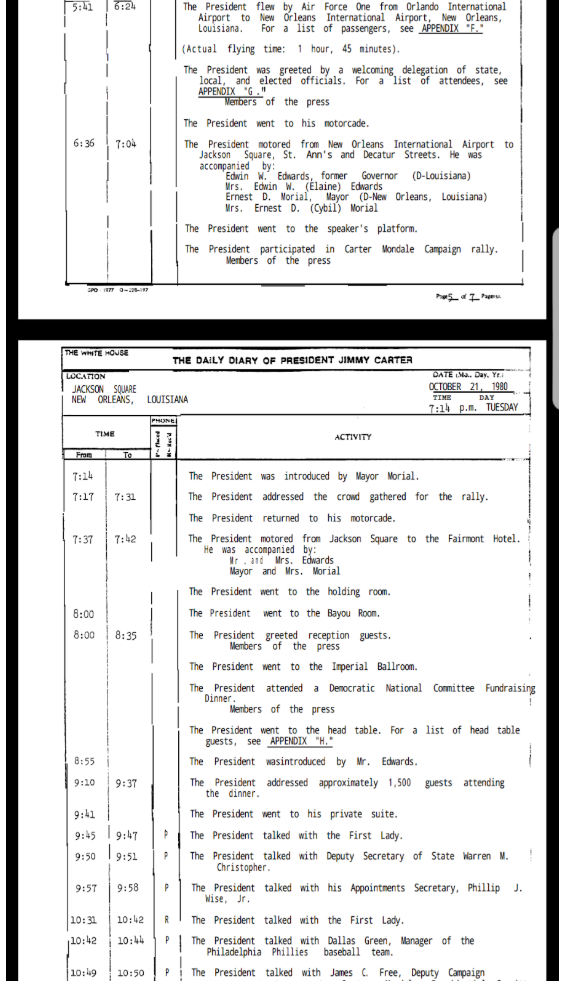
The hotel is still grand as it was when Carter arrived: extravagant chandeliers, marble-white columns, and ornate floors made of blue, yellow, red and cream tiles. But much else is different. The Bayou Room and the Imperial Ballroom, both used during the visit, have since been converted into guest rooms on the second floor.
Any other evidence of President Carter’s visit had been destroyed by Hurricane Katrina more than two decades later.
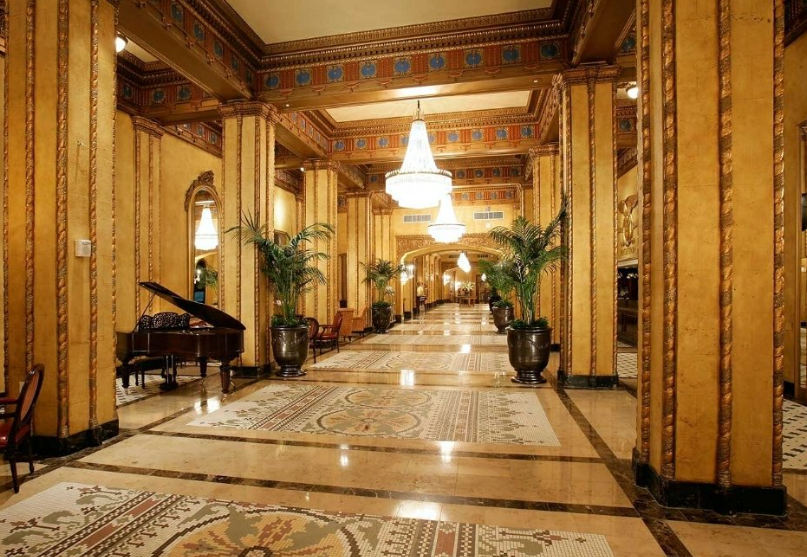
Carter’s speech that night was proof that Louisiana was still a battleground. Eisenhower admitted the state was not within reach for Democrats in the 1950s, and LBJ conceded that changed with his Civil Rights Act of 1964. Now, Carter was fighting to keep his Democratic relevant in a quickly-shifting region.
His words, however, failed. A few weeks later, Reagan squashed Carter in the general election, 489 electoral votes to 49. Every state in the Deep South, with the lone exception of Carter’s home state of Georgia, voted Republican.
Ronald Reagan and George H.W. Bush’s Republic National Convention
Reagan came to New Orleans, Louisiana now considered a swing state, several times during his Presidency. His first trip was during his inaugural year as President, on September 28, 1981, to speak at the Annual Meeting of the International Association of Chiefs of Police. He spoke at the same Rivergate Convention Center that Nixon spoke at a decade earlier.
Reagan was characteristically charismatic:
It’s a privilege to stand here today with those who command the front lines in America’s battle for public order. You have a tough job and a dangerous one. Believe me, I know. I mean no irreverence when I mention that I once played a sheriff on TV who thought he could do the job without a gun. I was dead in the first 27 minutes of the show.
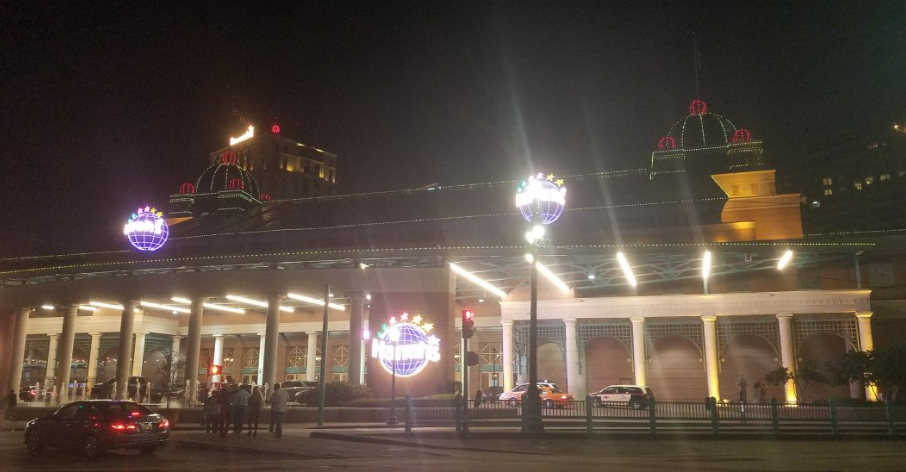
He would visit again in ’82, ’83 and ’86, but his last trip—for the Republican National Convention in 1988—was the most memorable.
The Convention, held in the Superdome, hosted five past, current, and future Presidents: Ford, Reagan, H.W. Bush, W. Bush, and even Donald Trump.
This nola.com article about the convention has some amazing descriptions of the lengths the city went through to put our best foot forward:
“It was a beautiful thing – and it took considerable time and effort to pull that beautiful thing together, not to mention millions of dollars. But, despite a local economy that was still hurting from plummeting energy prices and the subsequent bottoming out of the state’s oil industry, New Orleans did its darndest to put its best foot forward. And, following months of preparation, it showed. Political touches were everywhere around town, with the Crescent City trading its traditional purple, green and gold for red, white and blue.
“Flowers in those patriotic colors were planted just off Interstate 10 in Metairie to form a blooming GOP pachyderm. A giant American flag was painted – by Orleans Parish Prison inmates – on the grass in front of the New Orleans Museum of Art. A Dixieland jazz band and a retinue of star-spangled greeters met delegates as they stepped off their planes at New Orleans International Airport, thrusting Hurricanes from Pat O’Brien’s into their waiting hands.”
The deadpan bodyguard to Maine’s governor said, “Not enough restaurants. Food’s terrible. People are really unfriendly. There’s just not enough enthusiasm in this town,” before breaking out in laughter: “It’s incredible. What an effort this must have been.”
Reagan flew into the airbase at Belle Chasse and his motorcade rode him over the not-yet-opened twinspan bridge that would later be the Crescent City Connection. He gave his speech on the first night, which at times was more like a stand-up routine. Joking about his age, the President said, “You know, I always feel at home here in Louisiana because, you know, I’m the fella that talked Tom Jefferson into buying it.”
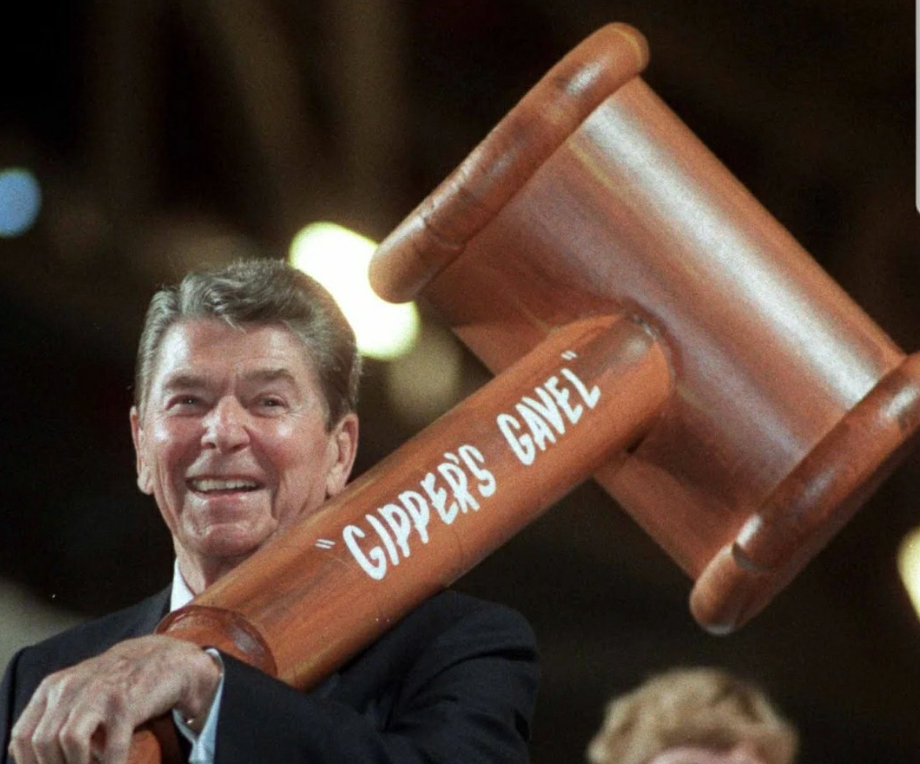
Vice-President (and presumptive Presidential nominee) Bush arrived for the third day of the Convention and still hadn’t announced who his running mate would be. He arrived at the same Belle Chasse airbase Reagan had, but opted to take a riverboat across the Mississippi to Spanish Plaza.
But running mates and pageantry weren’t the only drama. Prominent local newsman, WWL-TV’s Garland Robinette, was detained by security for trying to sneak a handgun into the convention in his briefcase. (Harkens back to the attempted Nixon assassination in New Orleans years earlier.)
This is also the Convention when Vice-President Bush swore, “Read my lips – no new taxes!” as well as when he promised, famously and eloquently, to “keep America moving forward, always forward—for a better America, for an endless enduring dream and a thousand points of light.”
The Modern Presidency in New Orleans
Many have forgotten – or never knew – that President Bill Clinton’s very first speech outside of Washington was in New Orleans. He carried the State in the 1992 and 1996 elections, the last Democrat to do so in a Presidential election.
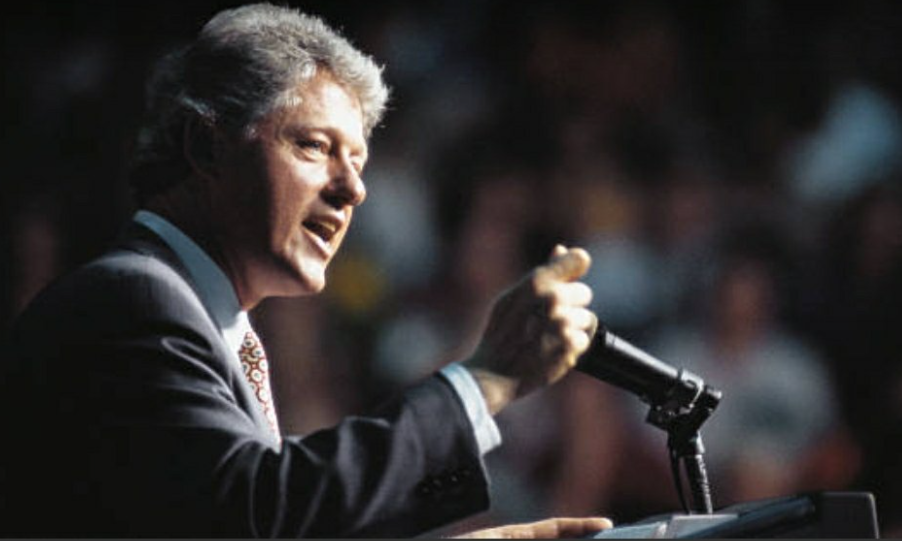
A common belief is that the moment that sank President George W. Bush’s presidency was when he flew over—instead of landing in—New Orleans during the aftermath of Hurricane Katrina.
A little more than two weeks after the storm, though, Bush arrived in a mostly-evacuated city to give a nationally televised speech about the state of New Orleans and the Gulf Coast, and the steps that had been taken to save it. At one point he looks into the camera and said, “There is no way to imagine America without New Orleans.”
Barack Obama learned from the mistakes of his predecessor and visited a recovering New Orleans early and often. During his Presidency, he visited our city no less than four times. President Obama’s first visit was October 15, 2009, when he visited Dr. King Charter School in the Lower Ninth Ward and spoke at the University of New Orleans.
Obama also learned from his predecessor when he went to Dooky Chase’s to eat during his primary battle with Hillary Clinton in 2008. In an unforgivable snafu, President Obama put hot sauce on the gumbo Leah Chase prepared for him. She reprimanded him for it then and even reminded him of it seven years later when he came back in 2015!
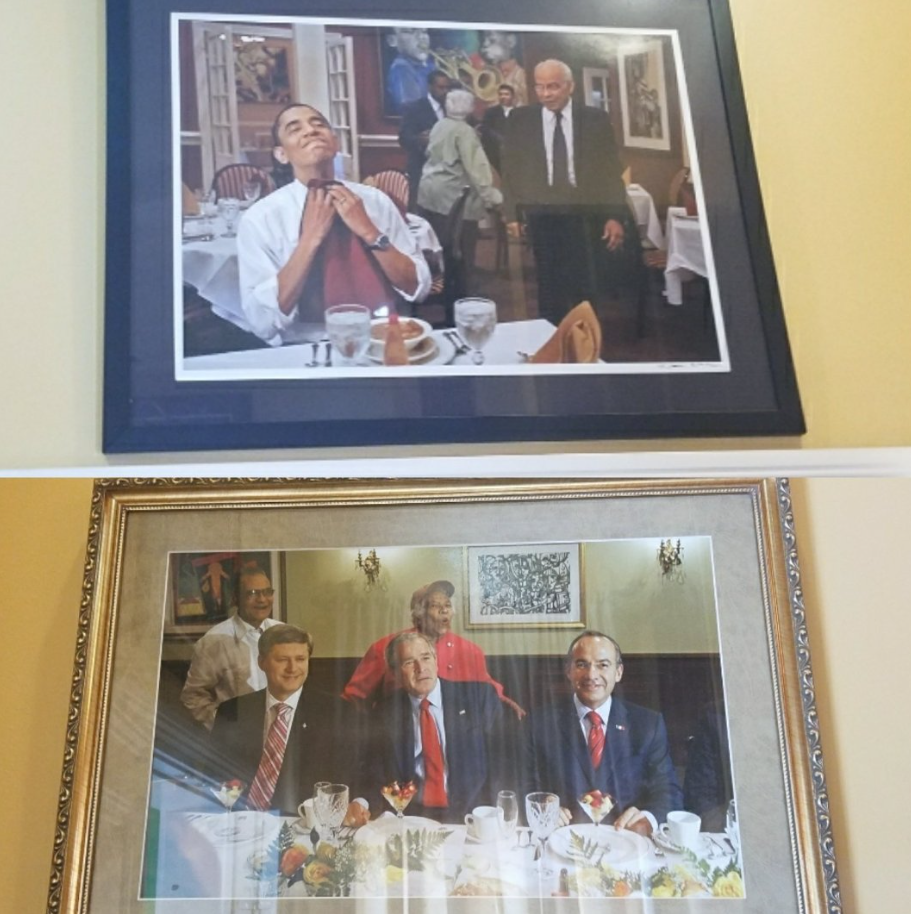
In his two terms as president, Obama also ordered a fried oyster poboy with fried pickles from Parkway Bakery & Tavern (during his first term) and fried chicken at Willie Mae’s Scotch House (during his second).
That visit was on August 27, 2015—ten years after Hurricane Katrina—and the President spoke at the newly-built Andrew P. Sanchez Community Center in the Lower Ninth Ward. He made jokes about not being able to finish the bread pudding at Willie Mae’s, but then got emotional when he spoke to the crowd of New Orleanians, no longer the scattered refugees President Bush reached out to by television.
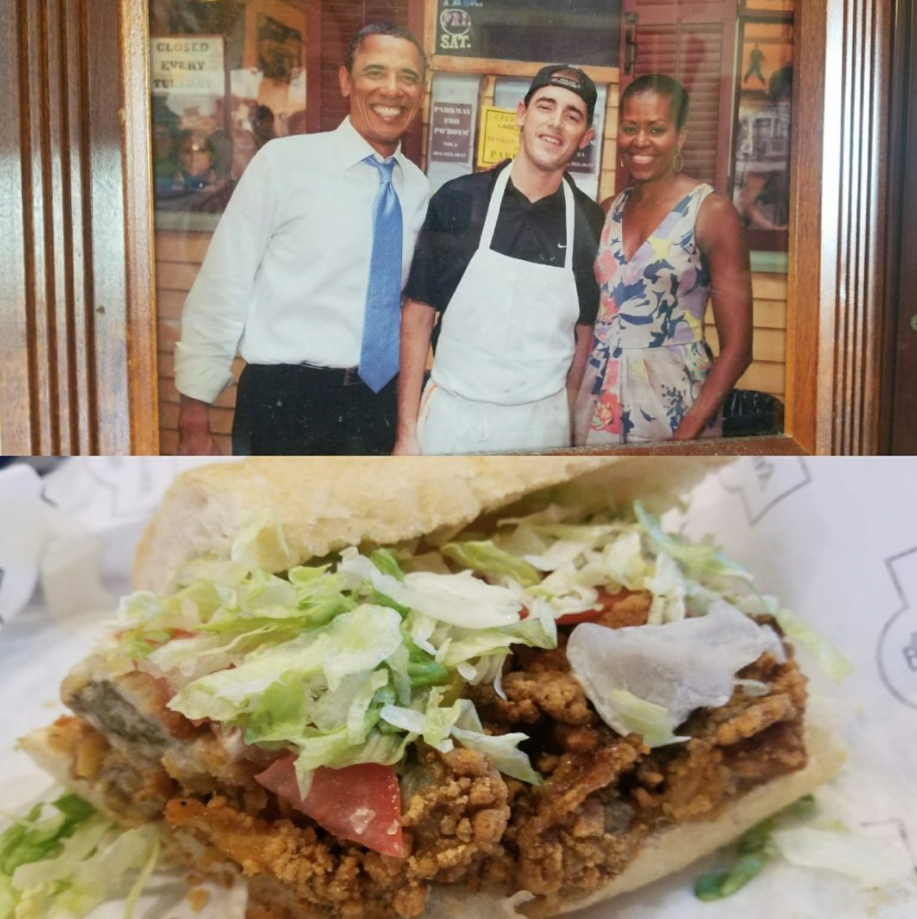
So many had come home. And they were here in front of him that afternoon. President Obama told the crowd, “You inspire me.”
And the visits haven’t stopped with the two most recent presidents.
President Biden came several times, most notably to discuss his big infrastructure bill and to mourn the victims of this year’s New Year’s terrorist attack. President Trump has also come to the Crescent City, most recently for the Super Bowl. That makes two different sitting presidents in one calendar year. Not bad!
When Thomas Jefferson purchased our port more than two centuries ago, he knew he was purchasing something important.
So important, that New Orleans has inspired presidential visitors for years.
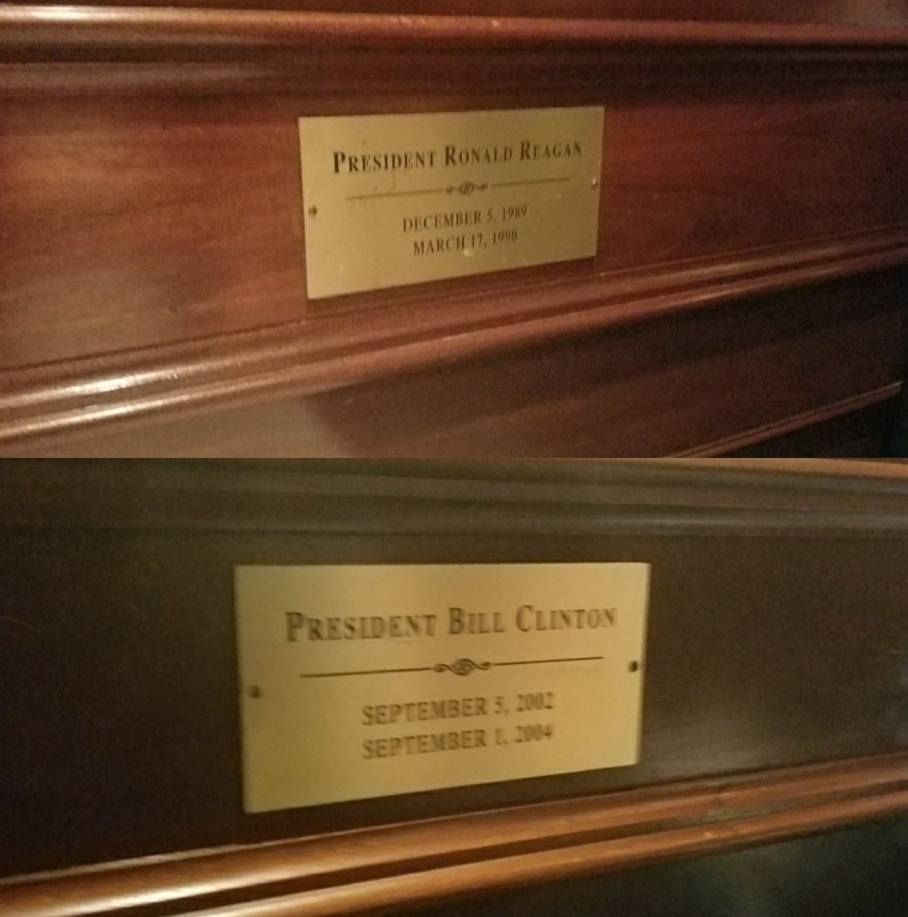
Nixon was inspired by our kindness when he said, “This is a good city and it is a warm and friendly, hospitable city. May it always be that way for a President, or for somebody that was nothing, as I was [when I first visited] 29 years ago.”
Ford was inspired by our balance when he told a crowd at Tulane University, “New Orleans is more, as I see it, than weathered bricks and cast iron balconies. It is a state of mind, a melting pot that represents the very, very best of America’s evolution, an example of retention of a very special culture in a progressive environment of modern change.”
Bush was inspired by the thought of losing her, when he said we “can’t imagine an American without New Orleans.”
And Obama was inspired by our resilience. “The people of New Orleans, there is something in you guys that’s just irrepressible,” he said from the lectern. “You guys have a way of making a way out of nowhere. You know the sun comes out after every storm. You’ve got hope.”